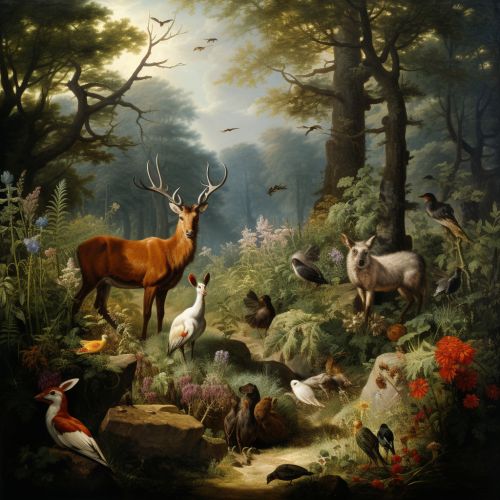Animal Learning and Navigation
Introduction
Animal learning and navigation are two intertwined aspects of animal behavior that have been the subject of extensive scientific study. The ability of animals to learn from their experiences and navigate their environments is crucial for survival, reproduction, and overall fitness. This article delves into the mechanisms and processes involved in animal learning and navigation, with a focus on the cognitive and sensory aspects of these behaviors.


Animal Learning
Animal learning is a change in behavior that occurs as a result of experience. It involves the acquisition, processing, storage, and application of information, and is a fundamental aspect of animal cognition. There are several types of learning, including habituation, classical conditioning, operant conditioning, and observational learning.
Habituation
Habituation is the simplest form of learning, where an animal reduces its response to a stimulus after repeated exposure. This process allows animals to filter out irrelevant stimuli and focus on those that are important for survival.
Classical Conditioning
Classical conditioning, also known as Pavlovian conditioning, involves the association of two stimuli. An animal learns to associate a neutral stimulus with a significant one, leading to a conditioned response.
Operant Conditioning
Operant conditioning, also known as instrumental conditioning, involves an animal learning to associate a behavior with a consequence. Positive reinforcement and negative reinforcement are key components of this type of learning.
Observational Learning
Observational learning involves an animal learning by watching and imitating the actions of others. This type of learning is common in social species and plays a crucial role in the transmission of behaviors within a group.
Animal navigation refers to the ability of animals to move through their environment with purpose and precision. It involves a range of sensory and cognitive processes, including spatial memory, magnetoreception, echolocation, and celestial navigation.
Spatial Memory
Spatial memory is the ability of an animal to remember the location of objects and landmarks in its environment. This form of memory is crucial for navigation and is often associated with the hippocampus, a region of the brain involved in spatial learning and memory.
Magnetoreception
Magnetoreception is the ability to detect magnetic fields, which is used by many animals for navigation. This sense allows animals to orient themselves and navigate over long distances, even in the absence of visual landmarks.
Echolocation
Echolocation is a method of navigation used by certain animals, such as bats and dolphins, that involves emitting sounds and interpreting the echoes to determine the location and distance of objects.
Celestial navigation involves the use of celestial bodies, such as the sun, moon, stars, and planets, for orientation and navigation. Many animals, including birds, insects, and sea turtles, use celestial cues for long-distance migration.
Learning and navigation are closely linked in animal behavior. Learning processes, particularly spatial learning, play a crucial role in navigation. Animals learn about their environment and use this information to navigate effectively. For example, they may learn the location of food sources, predators, or mates, and use this information to guide their movements.
Conversely, navigation can also influence learning. The experience of navigating through an environment can enhance spatial learning and memory. Moreover, the challenges posed by navigation can drive the evolution of cognitive abilities in animals.
